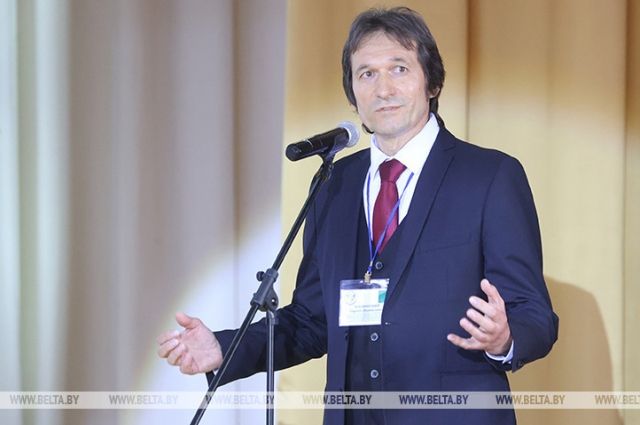NieuwsuurCompleted life
Judith Pennarts
reporter Nieuwsuur
Silvia Geurts
editor Nieuwsuur
Judith Pennarts
reporter Nieuwsuur
Silvia Geurts
editor Nieuwsuur
Hospices, which in principle only accept people with a life expectancy of less than three months, are receiving a growing number of requests from people who consider their lives to be complete. These people want to stop eating and drinking, which will cause them to die. For hospices, this means maneuvering between various dilemmas, according to research by News hour.
Dilemmas for hospices are diverse and often fall on the shoulders of healthcare staff. That should be able to handle it well. For example, people can become confused due to dehydration and are no longer consistent in refusing fluids and nutrition. Discussions may also arise among family, doctors, employees and volunteers. This then leads to unrest during the process.
Not every person admitted with a death wish actually dies. Some people still want to live and stop the process. While other people sometimes don’t move fast enough. They or family members then put pressure on the healthcare staff and want the nurses to put someone to sleep.
Expertise
Approximated in total News hour forty hospices. Especially institutions that employ professional staff, such as the members of the Hospice Care Netherlands Association. Of the forty institutions, 31 completed the survey. This is only a limited part of the estimated 270 hospices in the Netherlands.
To the question: Do you, as a hospice, notice that there is interest in consciously stopping eating and drinking among clients who (want to) register? More than half of the hospices see an increasing interest. Another part also sees this interest, but not more than a few years ago.
Three quarters of hospices offer care and guidance to patients with a consistent wish to die, for example in the context of a completed life. There is also experience with the procedure in the so-called ‘almost home homes’ and in the palliative departments of nursing homes, but these locations are not included in this survey.
One of the institutions that responds is Academic Hospice Demeter in De Bilt. Nursing specialist Cathelijne Verboeket: “We get people here who come to us on their own, have been referred by their GP or by another hospice. Not every hospice wants to do it or doesn’t have the expertise.” This fall, her hospice will admit two people who consciously want to stop eating and drinking.
Hospice doctors are also seeing growing interest in Alkmaar and Roosendaal. Both hospices now support approximately ten clients per year.
Every deathbed is unique, you have to keep looking at what is needed.
Nurse Cathelijne Verboeket
Report two hospices with Christian identity News hour that they do not cooperate in the process. One institution says: “A decision by a client that accelerates the end and has so much impact on the informal caregivers and the care provider is not in accordance with our standards and values.”
Another hospice on a religious basis does provide care, under conditions. “Our hospice guides guests who are already staying in the hospice and who make the choice during admission to speed up the dying process. With new requests from people who are not terminal, the decision is different. We only admit these guests when they have already stopped at home, are terminal and the impending death can no longer be prevented.”
There are also hospices that do not cooperate with the method in principle. “We experience a completed life as not suitable for a hospice and therefore do not offer guidance on stopping eating and drinking,” says one hospice.
At the hospice in De Bilt they believe that people with a consistent death wish are entitled to good palliative care. Verboeket: “Since 2020, we have guided fifteen to twenty people, mainly in the hospice, but also at home. As a result, we have built up quite a bit of expertise. But every deathbed is unique, you have to keep looking at what is needed.”
Stop quitting?
Not everyone who starts using the method dies, according to the survey. More than half of the hospices indicate that they have had clients who did not continue the process or changed their mind halfway through.
Hospice doctor Annemarie den Dulk from the Roosdonck hospice in Roosendaal recognizes this. “People can smuggle – that’s not a problem – but we will continue to have the conversation of course. Whether the desire is still there and whether there might be reasons to stop.”
Are you thinking about suicide or worried about someone? Talking about suicide helps and can be done anonymously via chat www.113.nl or by telephone on 113 or 0800-0113.
Yvonne van Ingen is a palliative care consultant at a hospice in Alkmaar: “We always agree carefully before admission: it is your wish, it is fine to change your mind. Then someone can end the procedure and go home again.”
But it also happens that people want to drink again out of confusion. That is confrontational for people around it, says Van Ingen. “Then you need good nurses who observe whether there is a state of confusion. If so, then we have to do something about it. Then the solution is not to give something to drink, but to ensure that someone does not suffer from thirst. “
In the preliminary phase, hospices record all agreements with the client and family about the course of events during such situations. These agreements are intended to prevent misunderstandings.
Most patients die within one to two weeks. Although that is not fast enough for some. Verboeket: “Then people want to die so badly that they are in a hurry. Then they immediately want to be artificially put to sleep. But that is not possible and is not allowed. We have to adhere to the guidelines. So it is not ‘you ask us to turn’ .”
Patients may be put to sleep for short periods in the hospice, for example if they are in pain or very thirsty. “Sleeping pills help these people get through it,” says Den Dulk.
Question answer
The impact of consciously stopping eating and drinking is enormous, for both family and caregivers. It accelerates death, and not everyone around the patient can handle that well. Is it a painful death? Is there an age limit? And what does the guidance consist of? Read the answers to important questions here.
Wrestling
Our survey also shows that a number of hospices are struggling with the procedure. “People rarely keep it up. It also always causes a lot of discussion among family, doctors, employees and volunteers,” writes a hospice. And another: “It does cause unrest in the team, especially if patients are not consistent in refusing fluids and nutrition.”
Van Ingen emphasizes that the process in advance is important, and certainly also the guidance during the process. “That must be really well arranged. That is a strict condition. We record all agreements.”
Den Dulk calls it a misconception that it would be an ordeal and people get pain due to dehydration, for example. “If there is good medical guidance, with nursing that has experience and prepares people well for what is to come, then it is actually a good process.”
Younger people
One final dilemma for hospices is the age of people who come forward. Because these are not just the very elderly. Both Van Ingen and Den Dulk also have experience with younger people, albeit outside the hospice through their GP. “They are increasingly open to this,” says Den Dulk, who guided a general practitioner with a 37-year-old patient who stopped eating and drinking at home. “These are long decision-making processes, they really don’t happen overnight.”
2023-09-28 18:29:01
#Hospices #selfchosen #life #run


